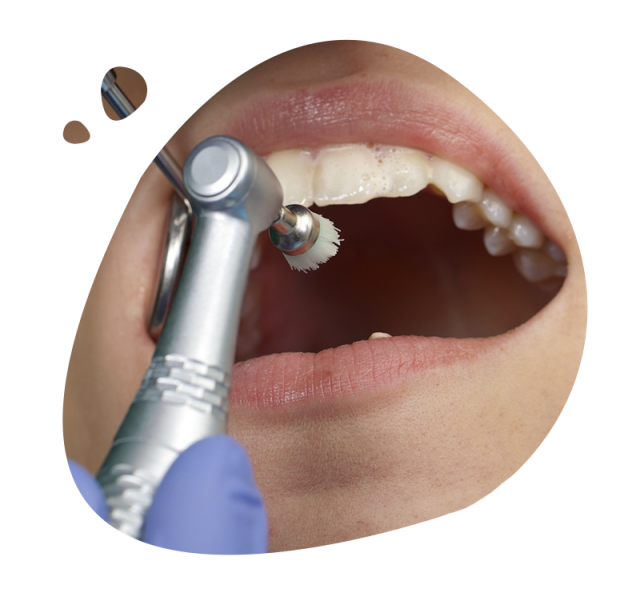Tooth Stone Cleaning

How Dental Calculus is Formed and Cleaned
The foods we eat, the beverages we drink, bacteria, and minerals in our saliva accumulate over time in the pocket between the teeth and gums. These residues combine with calcium in the saliva to form tartar over time. Despite good oral hygiene, the formation of dental calculus in the gum pocket is inevitable. This calculus interferes with the nutrition of the teeth and eventually leads to inflammation of the gums. Red, swollen, and bleeding gums are caused by uncleaned dental calculus. Additionally, dental calculus that is not cleaned for a long time also causes bad breath.
How is Dental Calculus Cleaned?
Using an ultrasonic radiation device called a Cavitron, dental calculus is removed from the tooth surface. Polishing, which is done with high-speed rotating brushes, removes the deposits left by tartar and bacterial plaque. Thus, a clean, smooth surface is created, making it difficult to re-deposit bacterial plaque and dental calculus.
This is generally a single session and takes 15-20 minutes. It is a painless procedure and does not require anesthesia.
Does Dental Calculus Recur After Cleaning?
Yes, it does. As long as saliva is secreted in the mouth and eating and drinking occur, dental calculus will also form. This is a natural process that cannot be prevented. Regular brushing and dental cleaning delay the formation of calculus but do not completely eliminate it. Depending on cleaning habits and saliva composition, calculus may form more quickly in some people than in others. Therefore, it is necessary to clean your tartar every 6 or 12 months, according to your dentist’s recommendations.


